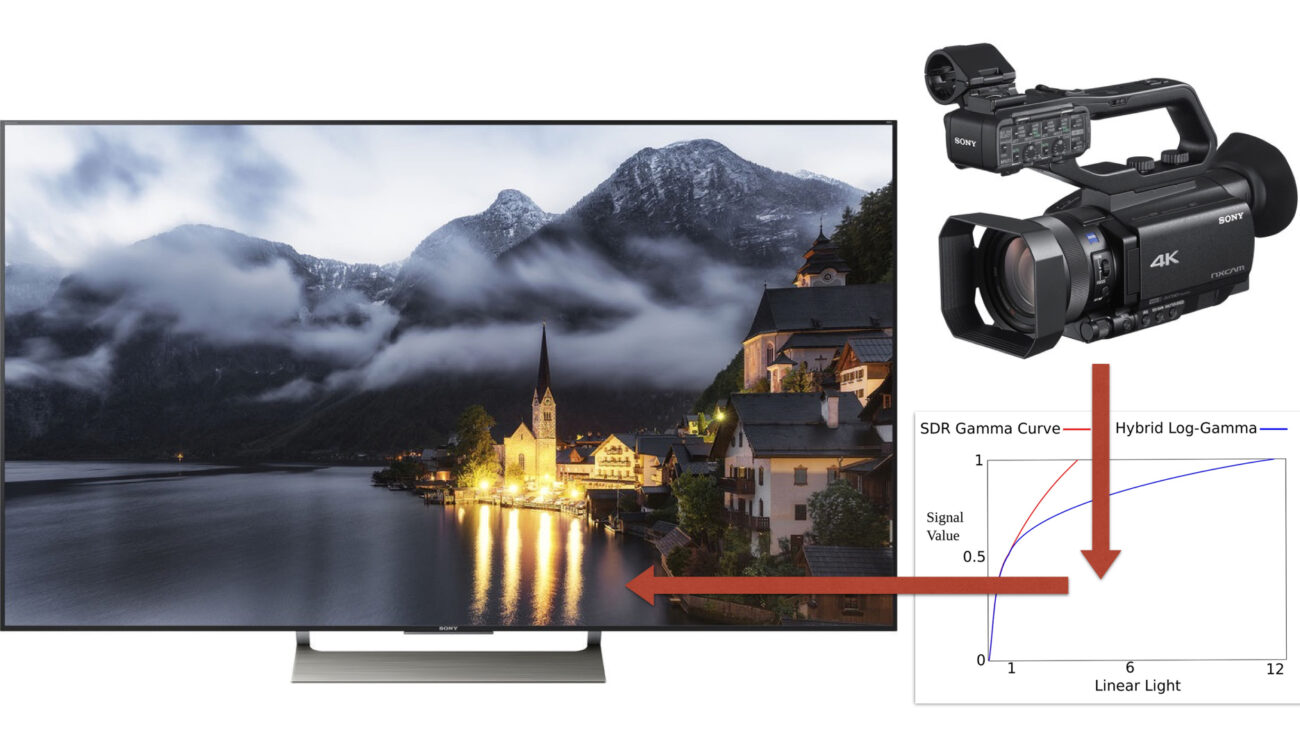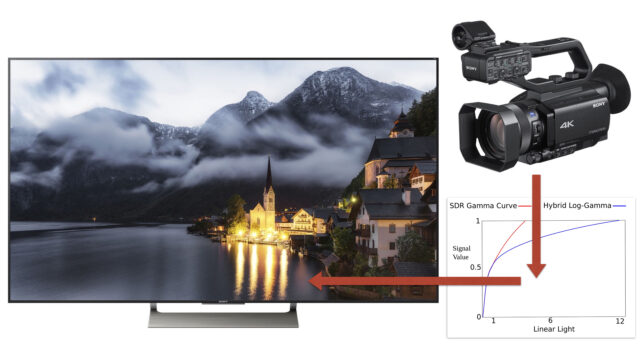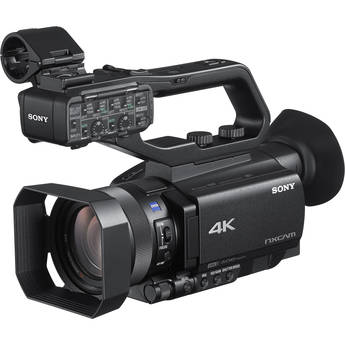
Display technology has suppressed camera technology over the years, preventing filmmakers from unleashing their visual creativity. Nowadays, the boundaries are significantly reduced thanks to HDR TVs and HLG.
HDR (11 stops) vs SDR (6 stops)
First, a word about HDR. HDR (which stands for High Dynamic Range) means being able to display a bigger brightness and contrast range. An HDR TV display contains and is able to present up to ten times as much brightness compared to a regular TV with SDR (Standard Dynamic Range) in Rec. 709.
It must be noted that not everything will be presented brighter in the HDR display. For example, a white piece of paper will be presented as pure white, but only direct sources of light will be presented brighter on a proper HDR display.
A Rec.709 TV (Standard Dynamic Range) displays ONLY 5-6 stops – enough to present people, skin tones and other objects that fall between black and white, and delivers a perfectly usable image.
Cameras are far more advanced than TVs in term of HDR
Cameras have been capable of capturing much more than 6 stops for a long time now. For example, when shooting with a Log profile, a camera is capable of capturing 14 stops, but a TV will squeeze those into only 6 by the SDR (Rec.709) display, and we will see a flat and washed-out image.
It is important to emphasize that there is no such thing “Flat” picture profile. Those milky images are caused by the limitations of the standard Rec. 709 TV dynamic range.
In other words, when we shoot Log, we shoot HDR!
HDR TVs as a filmmakers’s lifeline
HDR TVs can display 11 stops of dynamic range, and thus have the ability to reproduce the full amount of stops in the Log/flat picture profile, which leads to a vivid and contrasty image.
The video below by Alister Chapman presents a well-explained comparison between a Rec. 709 display and an HDR display receiving input from a camera shooting in a flat picture profile, and you can see the significant difference when switching between the two.
Conclusion: When you are shooting Log, use an HDR monitor in order to see the image correctly.
HLG – Hybrid Log Gamma as a great delivery option
HLG stands for Hybrid Log Gamma, which means a hybrid between Rec 709 and Log. It is available as a picture profile on cameras such as the Sony FS5, Sony a7RIII, Sony AX700 just to name a few.
It must be noted that this is a delivery standard that has the ability to send HDR images to the display! Although this curve is optimized for delivery, it’s also a very capable gamma for acquisition and grading
When you view HLG on a regular Rec 709 TV (SDR), you will get a perfectly usable picture. It does look a little bit darker due to the 75% white recording, but when you take this profile and view it on an HDR monitor, you will see a much more vivid picture with much greater and improved highlights!
HLG delivers a signal that’s great for HDR but that’s usable for SDR as well.
Watch the below video by Alister Chapman to see the impact of HLG.
Stops & NITS
For further info regarding Stops & NITS watch that great video below
Display technology is finally catching up to the cameras, so cinematographers and directors will be able to see what they are actually shooting in the most accurate way. Would you use HLG and HDR in your productions? Tell us in the comments below!


























